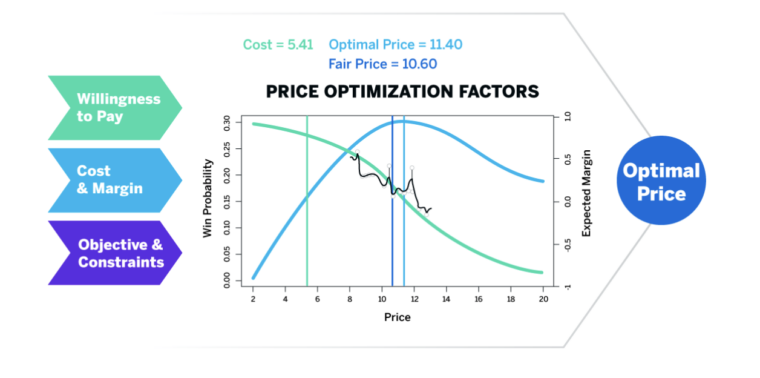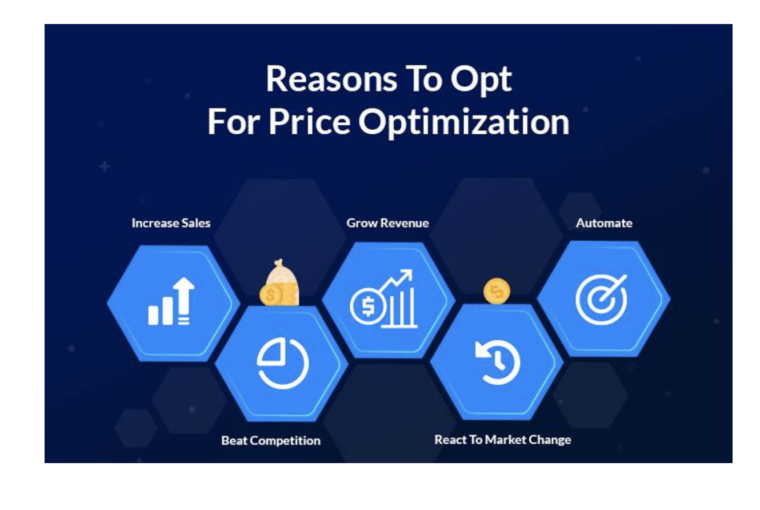Price optimization models definition
Ah, pricing – the age-old tango that keeps business folk dizzy and disoriented. On one side, you’ve got the siren’s call of jacking up those prices for maximum profits. But get too greedy, and bam! Customers hop over to cheaper pastures quicker than a startled gazelle. It’s a delicate balancing act that has companies contorting themselves into pretzels, desperately seeking that elusive sweet spot of the “Goldilocks price” – not too hot, not too cold, just right.
That’s where these fancy things called price optimization models come in. They’re like having a pricing crystal ball that parts the fog and guides you safely through the minefield of potential pricing snafus. Gone are the days of winging it based on gut feelings or simply matching your competitor’s prices. Nope, we’re talking serious data-driven voodoo here.

The Data Bonanza
At the heart of any self-respecting price optimization model lies a gluttonous appetite for all things data. We’re talking reams of intimate customer intel – their buying quirks, price sensitivities, you name it. Sprinkle in a heavy dollop of real-time market conditions, a pinch of competitor pricing strategies, and you’ve got yourself a rich data gumbo that these optimization cuisiniers can really sink their teeth into.
But wait, there’s more! Thanks to whiz-bang software like price monitoring software and advanced analytics platforms, this data gets sliced, diced, deconstructed and reconstructed eighteen ways to Sunday. Powerful algorithms and machine learning bots churn through the noise, distilling it all into crisp, actionable pricing insights. It’s like having a fully-loaded pricing SWAT team, equipped with infrared goggles to detect the faintest pricing flaws.
The Optimization Buffet
Once this data tour-de-force is prepped and ready, it’s time to pick your optimization poison from the available pricing model buffet. You’ve got options galore to cater to your strategic cravings:
The Customer-Centric Model: This one’s all about catering to the fickle customer. Through fancy segmentation methods and consumer behavior voodoo, it lets you customize pricing down to the individual level based on their unique tastes and willingness to splurge. Talk about exclusive treatment!
The Demand Watcher: For the companies transfixed by the ebb and flow of consumer demand, this econometric model is your spirit animal. It crunches reams of data to anticipate demand peaks and valleys, guiding you toward those ideal price points that’ll keep sales humming like a well-oiled machine.
The Competitor Crusader: In the bare-knuckle brawl of business, you can’t afford to take your eyes off those pesky rivals. This sly model keeps a watchful eye on the competition, helping you make pricing power moves to undercut adversaries or capitalize on their missteps.
If none of those single-focus models float your boat, the all-you-can-eat “Integrated” option might be your jam. It’s a dizzying whirlwind tour of all the pricing perspectives – customer, demand, competition – synthesized into one unified, panoramic view.

From Data to Dollars
Okay, so you’ve got your fancy pricing model all primed and ready to go. That’s just the first course in this multi-course data meal. Next up is getting that model properly implemented and integrated into your operation.
This is where things can get a bit gnarly in the data weeds – connecting data pipelines, vetting quality, configuring model architectures and algorithms. It’s like the model installation is doing a deep-tissue data message to work out any potential pricing knots and kinks.
But the real magic happens next when this well-oiled pricing machine finally hits its stride. Like a talented chef, it’s an endless cycle of tasting, adjusting seasonings, and refining the dish based on diner feedback.
Except here, the feedback loop is powered by machine learning bots meticulously analyzing new data, refining pricing recommendations, and autonomously adapting to shifting market flavors.
It’s not just the data geeks playing too. To really make pricing optimization sing, it needs to be an all-hands-on-deck cultural movement. Marketing, sales, product teams – everyone needs to get on board with treating data as the new gospel when it comes to pricing discussions. It’s about fostering a mindset of cross-functional collaboration and data-driven decision making across the entire organization.
The Pricing Crystal Ball
As our business world continues its blistering rate of change and disruption, you can bet your bottom dollar that these price optimization models will only grow more indispensable. In an era where things can flip on a dime, having that predictive pricing edge will be the key competitive advantage separating the winners from the also-rans.
To stay ahead of the curve, companies will need to embrace a mindset of continuous pricing innovation. That means staying on the bleeding edge, constantly exploring new data sources to incorporate – think social media chatter, IoT sensor data, and who knows what other data streams will emerge. It’ll be an endless pursuit of refining and augmenting those pricing algorithms to ensure every pricing decision is a bullseye.
Conclusion
At the end of the day, these price optimization models are simply powerful tools in business’s eternal quest for, well, optimal prices. They’ll never be a fix-all panacea. But by embracing them fully and making pricing a core strategic capability, companies can finally wrestle that unruly pricing serpent into a locked-down arm bar. Maybe not a flashy Olympic gold medal move, but certainly a grappling hold to maximize your pricing dominance.
